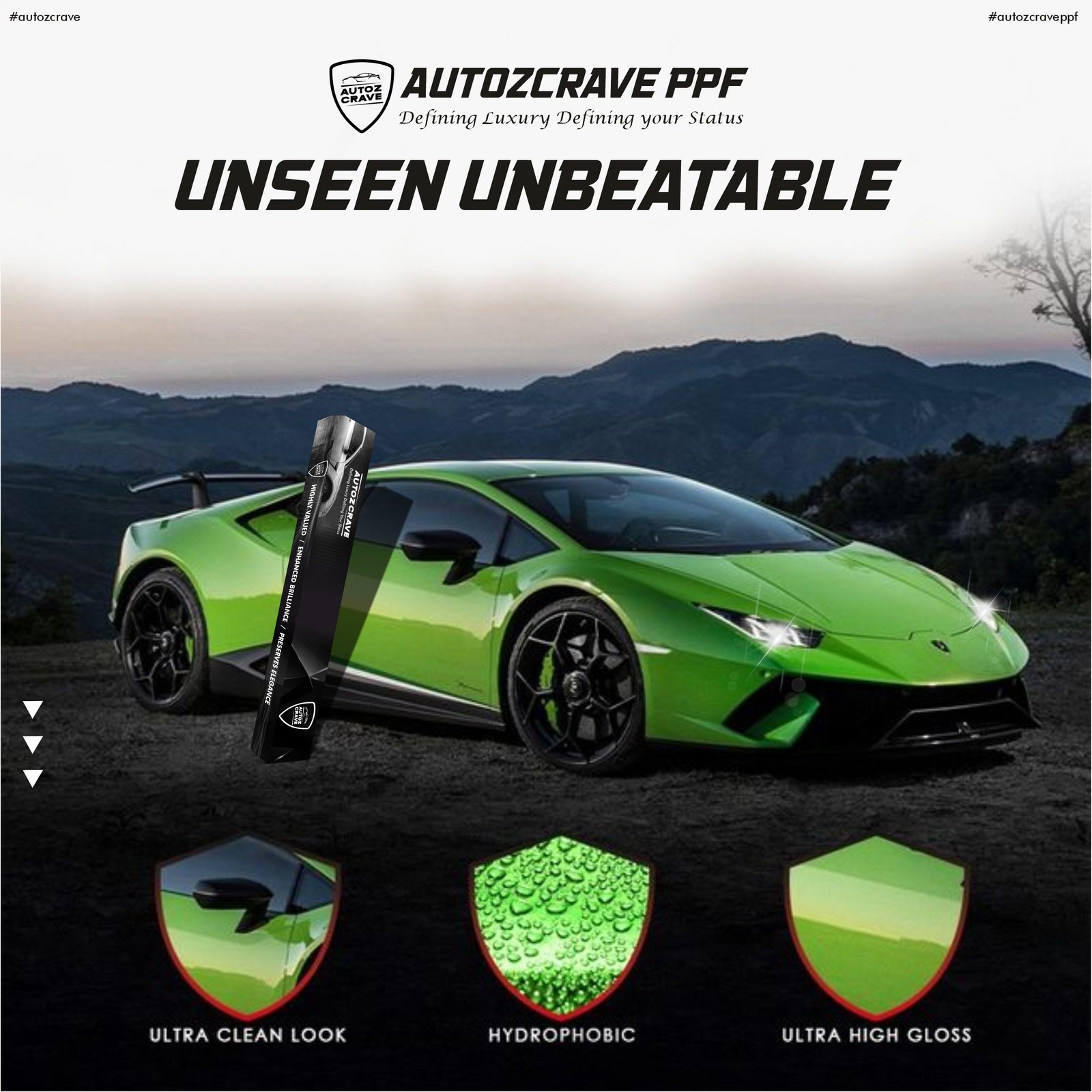Home Blog Details


Home Blog Details


Post By Autozcrave || 2024-11-09
Discover the ultimate guide to Paint Protection Film (PPF) and how it safeguards your vehicle's finish against scratches, road debris, and environmental wear. Dive into the benefits of PPF, installation tips, and maintenance best practices to keep your car looking pristine for years.

When it comes to protecting your car's paint, paint protection film (PPF) has become a popular choice for car owners. But is it the right choice for everyone? Let's discuss these with Autozcrave: the problem, the irritation, and the solution
The paint on your car is in danger every single day. Your car is continually exposed to various elements, such as road debris, stone chips, damaging UV damage, and even minor scratches. This damage accumulates over time, giving your car a worn-out, drab appearance that lowers its value. You need a protective solution if you want to maintain the factory-new appearance of your car.
Picture yourself driving your automobile every day and observing tiny dents and scrapes on the bumper or hood. It irritates me. Repainting can be costly and time-consuming, which is worse. While traditional wax or ceramic coatings provide some protection, not all harm may be avoided. Here's where paint protection film comes in handy, but before we do anything more, let's examine its benefits and drawbacks

Durability: Paint Protection Film (PPF) offers incredible durability. In a study conducted by Autozcrave, PPF was found to be able to resist rock chips, bird droppings, and even acid rain better than untreated paint surfaces.
Self-Healing Properties: Many paint protection film (PPF) brands use advanced technology. One of the brands that stands out and is Autozcrave is using a unique and most interesting technology that allows the film to “self-heal” minor scratches caused by the heat of the sun or a simple heat gun. This feature keeps your car looking cleaner for longer without any extra effort
UV protection: Paint protection film acts as a shield against harmful UV rays, preventing the paint from fading over time. This is especially useful for people who regularly park their cars outside
Cost-effective in the long run: While PPF can be an expensive investment, it can save you significant money on paint repairs and detailing over the years. Studies show that cars with paint protection film (PPF) have a higher resale price than cars without PPF
High initial cost: Paint protection film can be expensive, often ranging from Rs 50,000 to Rs 20,000, depending on the coverage. For some people, this seems like a bargain, especially if they plan to keep the car for a short period of time
Maintenance: Despite being durable, PPF is not invincible. Improper care, such as the use of harsh chemicals, can damage the film. It also needs to be cleaned regularly to avoid a build-up of dirt and debris at the edges
Yellowing over time: Some low-quality films tend to turn yellow, especially in areas with high UV exposure. This can ruin the overall look of your car
Removal risk: If not professionally applied or removed, paint protection film can damage your paint
Paint protection film can be a great investment for those who want to keep their car looking new for years, but it does have some drawbacks. Consider its pros and cons based on your car's use, budget, and long-term plans.
Removing PPF is best left to professionals, as improper removal can damage the paint. Professionals use specialized tools and techniques to ensure safe removal.
For car owners wanting long-term paint protection, PPF can be worthwhile, especially for vehicles frequently exposed to harsh environments or for those who plan to keep their cars for years.
High-quality PPF can last up to 10 years with proper maintenance. Its lifespan depends on factors like exposure to sunlight, driving conditions, and care routines.
While PPF is beneficial, it has downsides, including a high initial cost, the need for regular cleaning, the potential for yellowing in lower-quality films, and a risk of paint damage if removed improperly.
PPF protects against most minor damage like rock chips, scratches, and UV fading. However, it may not fully prevent severe impacts or damage from improper care, such as using harsh chemicals.
Yes, many modern PPFs have self-healing properties. When exposed to heat, either from the sun or a heat gun, the film can repair minor scratches and swirl marks, keeping the surface looking smooth.
PPF offers several benefits, including enhanced durability, self-healing of minor scratches, UV protection, and long-term cost savings by reducing the need for repainting or touch-ups
PPF is a transparent film applied to a car’s painted surfaces to protect it from damage caused by road debris, UV rays, minor scratches, and contaminants. The film acts as a shield, preserving the paint underneath.